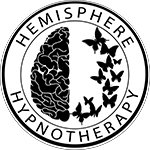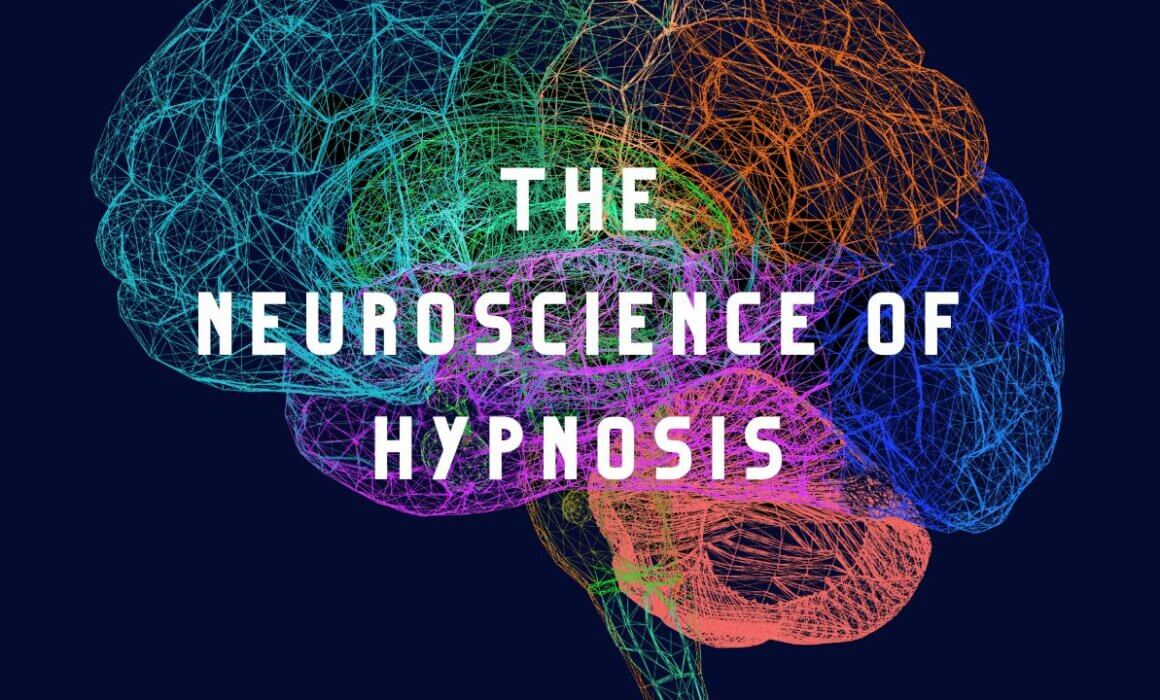The Neuroscience of Hypnosis
Interested in learning about the neuroscience of hypnosis? Well, friend, you are in the right place!
From ancient rituals to present-day therapeutic settings, hypnosis has been a subject of fascination and study. Today, thanks to cutting-edge neuroscience, we’re peeling back the curtain on the brain’s behavior during hypnosis.
As we navigate this expansive topic, we’ll lean on the wisdom of experts in the field, like Melissa Tiers, Lisa Wimberger, and Carla Chalah of Hemisphere Hypnotherapy, all of whom have contributed immensely to this intersection of neuroscience and hypnotherapy.
1. The Historical Matrix: Hypnosis Across Time
While grounded in ancient traditions, hypnosis has found relevance in contemporary therapeutic practices, with its essence remaining consistent: transforming the mind.
Ancient Roots: Hypnosis, in its earliest forms, can be traced back to ancient civilizations where rituals and ceremonies incorporated altered states of consciousness. From the sleep temples of ancient Egypt to the healing practices of the Greeks, the thread of hypnosis weaves its way through the fabric of time. The ancients recognized the power of the mind in shaping our experiences and sought to unlock its potential through trance-like states.
Mesmerism and the 18th Century: The 18th century ushered in a new era for hypnosis with the advent of mesmerism, named after the charismatic Franz Mesmer. Mesmer believed in a magnetic fluid that connected all living things and could be manipulated to induce healing trances. Although his ideas were later discredited, Mesmer’s work laid the groundwork for the understanding of suggestion and the power of the mind over the body.
19th Century: The Emergence of Hypnotherapy: The 19th century witnessed the evolution of hypnosis into a therapeutic tool. Pioneers like James Braid and Jean-Martin Charcot contributed significantly to the scientific understanding of hypnosis. Braid coined the term “hypnosis” and emphasized the role of suggestion, while Charcot explored its applications in treating various medical conditions. Their work paved the way for the integration of hypnosis into mainstream medical practices.
20th Century Renaissance: Hypnosis experienced a renaissance in the 20th century, with psychologists and clinicians recognizing its potential for treating psychological and emotional disorders. The work of Milton Erickson, a renowned psychiatrist, further expanded the scope of hypnotherapy, emphasizing the importance of individualized approaches and language patterns in inducing trance states.
Contemporary Relevance: In the 21st century, hypnosis has seamlessly integrated into contemporary therapeutic practices, offering a valuable complement to traditional approaches. Its essence remains consistent: the transformation of the mind. From managing stress and anxiety to addressing trauma and addiction, hypnotherapy continues to empower individuals on their journey toward mental and emotional well-being.
2. The Neuroscience of Hypnosis: fMRI – Deciphering the Brain’s Palette
In the contemporary exploration of hypnosis, the lens of neuroscience offers a captivating perspective, unraveling the intricate dance between mind and brain. Functional Magnetic Resonance Imaging (fMRI) emerges as a powerful tool, allowing us to peer into the inner workings of the brain and decode the neural symphony that accompanies hypnotic states. This section delves into the fascinating world of the neuroscience of hypnosis, where fMRI acts as a key to deciphering the brain’s palette.
fMRI Unveils the Active Zones:
Functional Magnetic Resonance Imaging has revolutionized our understanding of hypnosis by providing a dynamic visualization of brain activity. The technique enables a detailed examination of the regions activated during hypnotic states, offering insights into the neural pathways involved in this transformative process. As individuals enter hypnotic trances, fMRI unveils the active zones, painting a vivid picture of the brain’s response to suggestion and altered states of consciousness.
Pain Management and Hypnosis:
One of the groundbreaking studies in the realm of hypnosis and neuroscience comes from the pages of “Cerebral Cortex,” shedding light on hypnosis’s profound impact on pain management. This pioneering research showcased how hypnotic states can modulate the brain’s perception of pain, opening new avenues for therapeutic applications. The study emphasized that hypnosis is not merely a psychological phenomenon but a neurobiological one, influencing the brain’s neural pathways associated with pain.
The study’s findings revealed that individuals under hypnosis exhibited altered patterns of brain activity in regions linked to pain perception, suggesting that hypnosis can serve as a potent adjunct to traditional pain management strategies. This revelation has sparked further research into the use of hypnosis in alleviating chronic pain, postoperative discomfort, and other conditions where pain relief is a critical component of patient care.
Implications for Therapeutic Applications:
The intersection of hypnosis and neuroscience holds significant promise for therapeutic interventions. Understanding how hypnosis modulates brain activity allows clinicians to tailor approaches that harness its potential for various mental health challenges. From anxiety and depression to post-traumatic stress disorder (PTSD), the neuroscientific exploration of hypnosis opens doors to innovative and effective treatments.
3. The Neuroscience of Hypnotherapy: EEG – Tapping into the Brain’s Electric Waves
Beyond the realms of functional Magnetic Resonance Imaging (fMRI), another tool, the Electroencephalogram (EEG), opens a window into the dynamic world of the brain’s electric waves during hypnotherapy. This section delves into the fascinating terrain of the neuroscience of hypnotherapy, where EEG serves as a guide, translating the brain’s electrical activity into discernible patterns and offering real-time insights into the transformative power of hypnosis.
EEG Translates the Brain’s Electrical Activity:
Electroencephalography, or EEG, is a non-invasive technique that records the brain’s electrical activity through electrodes placed on the scalp. This technology allows researchers and clinicians to observe and analyze the brain’s electric waves in real-time, providing valuable information about neural patterns associated with different mental states, including those induced by hypnotherapy.
Theta and Gamma Waves – The Brain’s Symphony:
Within the realm of hypnotherapy, studies have brought attention to the role of specific brainwave patterns, notably theta and gamma waves, that characterize the hypnotic experience.
Theta waves, known for their prevalence during deep relaxation and meditation, take center stage during hypnosis. These slow-frequency waves reflect a state of heightened receptivity and are associated with the dreamlike, imaginative quality often reported by individuals under hypnosis. The prominence of theta waves provides empirical evidence of the altered state of consciousness induced by hypnotherapy.
Concurrently, the modulation of gamma waves adds another layer to the brain’s symphony during hypnosis. Gamma waves, associated with heightened cognitive processing and integration of information, suggest that hypnosis reaches into the cognitive depths of the brain. This modulation may underlie the enhanced focus, suggestibility, and cognitive flexibility observed in individuals undergoing hypnotherapy sessions.
Studies highlight the prominence of theta waves during hypnosis. Concurrently, gamma wave modulation suggests hypnosis’s reach into our cognitive depths.
Implications for Cognitive Enhancement:
Understanding the interplay of theta and gamma waves during hypnotherapy holds immense implications for cognitive enhancement and mental well-being. The intentional modulation of these brainwave patterns could offer therapeutic benefits for conditions such as anxiety, stress, and cognitive disorders. The neuroscientific exploration of hypnotherapy through EEG opens avenues for developing targeted interventions that leverage the brain’s electric waves to promote positive cognitive outcomes.
Future Directions and Therapeutic Innovations:
As EEG continues to unveil the intricate dance of brainwaves during hypnotherapy, the field stands on the cusp of exciting possibilities. Future research may uncover specific neural signatures associated with different therapeutic outcomes, enabling clinicians to tailor hypnotherapy interventions based on individual brainwave patterns. This personalized approach holds the potential to revolutionize the field of mental health treatment, offering innovative and effective strategies for individuals seeking transformative change.
4. Heart Math: Heart and Brain in Perfect Harmony
In the intricate dance of mind and body, the Heart Math approach sheds light on the symbiotic relationship between the heart and brain. This section explores the profound effects of heart-brain synchronization on cognitive and emotional states, delving into how hypnosis may play a pivotal role in fostering this harmony and amplifying its therapeutic efficacy.
Heart Math’s Research:
Heart Math, a field of research that investigates the interplay between the heart and brain, has revealed compelling insights into the ways in which these vital organs communicate and influence each other. Through innovative technologies like heart rate variability (HRV) monitoring, researchers have uncovered a dynamic relationship that goes beyond the traditional understanding of the heart as a mere pump.
Heart-Brain Synchronization’s Effects on Cognitive and Emotional States:
Heart-brain synchronization, as studied by Heart Math, goes beyond the mechanical aspects of circulation. The rhythmic patterns of the heart have been found to influence the brain’s cognitive and emotional processes. When the heart and brain are in coherence — meaning their rhythms are harmonized — individuals often experience enhanced mental clarity, emotional resilience, and overall well-being.
Hypnosis and Coherence:
Intriguingly, emerging evidence suggests that hypnosis may contribute to fostering heart-brain coherence. During hypnotic states, individuals often report a sense of deep relaxation and inner calm. This subjective experience aligns with the physiological markers of heart-brain coherence, where the heart’s rhythm becomes synchronized with the brain’s activity.
The potential of hypnosis to induce coherence between the heart and brain holds profound implications for therapeutic applications. When these two vital organs operate in harmony, individuals may experience heightened receptivity to suggestion, improved emotional regulation, and a more profound engagement with the therapeutic process.
Amplifying Therapeutic Efficacy:
As the connection between hypnosis and heart-brain coherence gains recognition, therapists and practitioners are exploring innovative ways to integrate these insights into therapeutic interventions. The amplification of therapeutic efficacy through the alignment of heart and brain may enhance the transformative potential of hypnosis, making it a more holistic and integrated approach to mental and emotional well-being.
Future Directions and Holistic Healing:
The exploration of heart-brain synchronization within the context of hypnosis opens up exciting possibilities for the future of holistic healing. Integrating Heart Math principles into hypnotherapy sessions may lead to a more comprehensive understanding of the mind-body connection, offering therapeutic strategies that not only address cognitive and emotional aspects but also promote physical well-being.
5. Melissa Tiers & Neuroplasticity: Rewiring the Brain by taking advantage of the Neuroscience of Hypnosis
Melissa Tiers, with her in-depth research, underscores hypnosis’s capability to harness the brain’s neuroplasticity, facilitating cognitive shifts and healing.
6. Lisa Wimberger & Neurosculpting: Molding the Mind
Lisa Wimberger’s neurosculpting presents a confluence of meditation and neuroscience, emphasizing how structured practices can induce transformative neural shifts.
7. Carla Chalah & The Power of Understanding The Neuroscience of Hypnosis:
Carla Chalah of Hemisphere Hypnotherapy emphasizes the significance of imparting knowledge about neuroplasticity and habit formation to her clients. She believes that understanding the malleability of their own brains empowers clients. This foundational knowledge acts as a factual tool and a pre-hypnotic suggestion, ensuring clients can navigate their transformation more effectively. By making clients privy to their own potential for change, Chalah amplifies the efficiency of hypnotherapeutic sessions.
8. The Road Ahead: Promise and Potential
Hypnosis, bolstered by modern neuroscientific findings, beckons a new era of therapeutic approaches. Its potential in mental health, neurorehabilitation, and overall well-being is vast and largely untapped.
In Conclusion
The intricate ballet of the brain under hypnosis, as deciphered through the lens of modern science, is a profound testament to our mind’s capabilities. As the work of experts like Tiers, Wimberger, and Chalah becomes more integrated into mainstream therapeutic practices, hypnosis stands to gain unprecedented recognition and application. It’s a realm where ancient wisdom and modern understanding meet, offering unparalleled avenues for healing and transformation. The odyssey is ongoing, but with every stride, we’re coming closer to unlocking hypnosis’s full potential for the betterment of humanity.
If you’re interested in earning a hypnosis certification, check out our 8 week certification training class!

